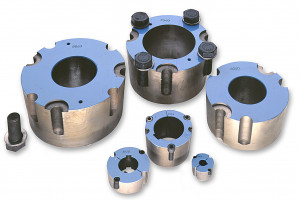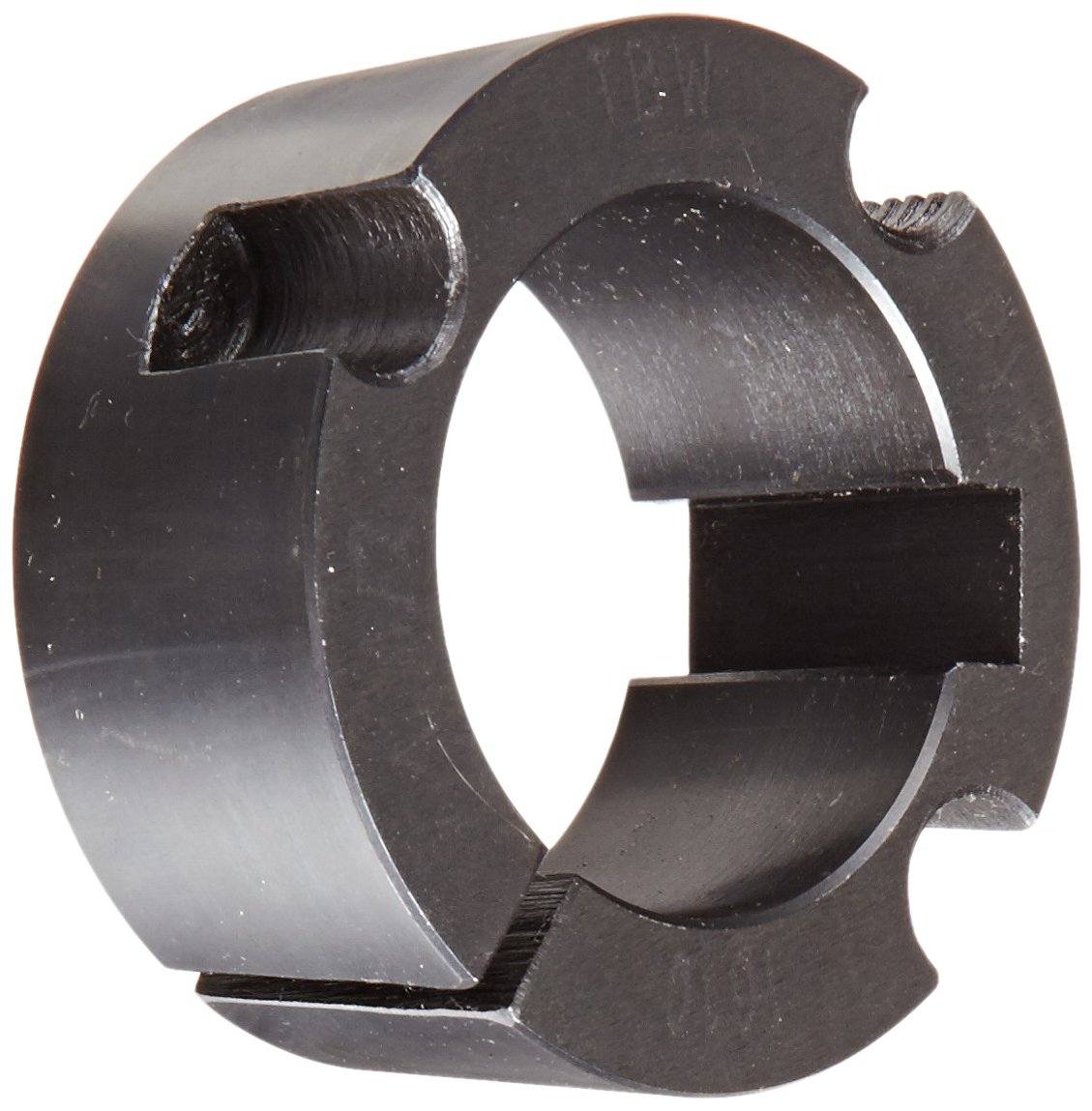
What are the temperature and environmental considerations when using taper bushes?
When using taper bushes in various applications, it is important to consider the temperature and environmental factors that can affect their performance and longevity. Here are some key considerations:
- Temperature Range: Taper bushes are typically designed to operate within specific temperature ranges. High temperatures can affect the material properties of the taper bush, leading to dimensional changes, reduced strength, or accelerated wear. Similarly, extremely low temperatures can cause brittleness and decreased flexibility. It is crucial to check the manufacturer’s specifications and ensure that the selected taper bush is suitable for the anticipated temperature range in your application.
- Corrosive Environments: Taper bushes can be exposed to corrosive environments, such as those containing moisture, chemicals, or other corrosive substances. Corrosion can affect the integrity of the taper bush and compromise its performance. In such cases, it is important to select taper bushes with appropriate anti-corrosion properties, such as stainless steel construction, corrosion-resistant coatings, or polymer materials that offer inherent resistance to corrosion.
- Dust and Contaminants: In applications where taper bushes are exposed to dust, dirt, or other contaminants, it is important to consider their potential impact. Dust and contaminants can accumulate on the taper bush surfaces, leading to increased friction, wear, and potential damage to the mating components. Regular cleaning and maintenance practices should be implemented to ensure the proper functioning of taper bushes in such environments.
- Lubrication: Lubrication plays a critical role in the performance and longevity of taper bushes. Proper lubrication helps reduce friction, wear, and heat generation between the taper bush and mating components. The choice of lubricant should take into account factors such as temperature, speed, load, and the presence of any specific contaminants or conditions. It is essential to follow the manufacturer’s recommendations regarding lubrication intervals, lubricant type, and application methods.
- Shock and Vibration: Taper bushes can be subjected to shock and vibration in certain applications. Excessive shock and vibration levels can lead to increased stresses, fatigue, and potential loosening of the taper bush. It is important to select taper bushes that are designed to withstand the expected levels of shock and vibration and ensure proper installation and secure fastening to minimize the risk of failure.
Understanding and addressing the temperature and environmental considerations when using taper bushes is crucial for ensuring their optimal performance, longevity, and reliability. By selecting taper bushes that are suitable for the anticipated operating conditions and implementing appropriate maintenance practices, you can maximize the effectiveness of your power transmission system and minimize the risk of premature failures or performance issues.

Where can I find tutorials on removing and replacing taper bushes in machinery?
If you are looking for tutorials on removing and replacing taper bushes in machinery, there are several resources available that can provide step-by-step instructions and guidance. Here are some places where you can find tutorials on this topic:
- Manufacturer or Supplier Websites: Many manufacturers or suppliers of taper bushes provide instructional materials on their websites. These tutorials may include written guides, videos, or diagrams that demonstrate the process of removing and replacing taper bushes in specific machinery. Visiting the websites of reputable taper bush manufacturers or suppliers and exploring their technical resources or support sections can often lead you to detailed tutorials.
- Online Video Platforms: Websites such as YouTube, Vimeo, or Dailymotion host a vast collection of instructional videos on various topics, including machinery maintenance and repair. Searching for keywords like “taper bush removal” or “taper bush replacement” on these platforms can yield tutorial videos that demonstrate the process visually. These videos can be helpful in understanding the practical steps involved in removing and installing taper bushes.
- Industrial Training Courses or Workshops: Some organizations or training institutes offer industrial maintenance or machinery repair courses that cover topics like taper bush removal and replacement. These courses may be available online or in-person, providing hands-on training and demonstrations. Participating in such training programs can give you a comprehensive understanding of the process and allow you to practice the skills under expert guidance.
- Engineering or Mechanical Forums: Online forums or communities focused on engineering or mechanical topics often have dedicated sections or threads where users discuss machinery maintenance and repair procedures. Browsing through these forums or posting specific questions related to taper bush removal and replacement can help you find valuable insights, tips, and resources shared by professionals or experienced enthusiasts in the field.
- Industry Publications or Books: Industrial magazines, books, or technical publications related to machinery maintenance and repair may include chapters or articles that cover taper bush removal and replacement. These resources often provide detailed explanations, accompanied by illustrations or diagrams, to guide you through the process. Checking relevant publications in the field of mechanical engineering or power transmission can provide you with in-depth tutorials.
When using tutorials, it’s important to ensure that the information is from reliable sources and applicable to your specific machinery and taper bush type. Always refer to the manufacturer’s instructions and follow proper safety procedures when working with machinery components.
By exploring these various resources, you can find tutorials on removing and replacing taper bushes in machinery, enabling you to perform these maintenance tasks effectively and safely.

Where can I get information on the key dimensions of taper bushes for compatibility?
If you are looking for information on the key dimensions of taper bushes for compatibility, there are several sources where you can obtain this information. Here are some common places to find the key dimensions of taper bushes:
- Manufacturer’s Catalogs and Websites: Taper bush manufacturers often provide detailed catalogs or product listings on their websites. These catalogs typically include comprehensive information about the dimensions, sizes, and specifications of their taper bushes. You can find details such as bore diameter, taper angle, outside diameter, keyway dimensions (if applicable), and overall length. Manufacturer catalogs are valuable resources for understanding the compatibility of taper bushes with different shaft sizes and mating components.
- Engineering Handbooks and Reference Guides: Engineering handbooks and reference guides related to mechanical power transmission or bushing selection may contain information on the key dimensions of taper bushes. These resources are commonly available in libraries, technical bookstores, or online platforms. They provide in-depth knowledge about various types of bushings, including taper bushes, and offer guidance on selecting the appropriate size and dimensions based on shaft requirements.
- Supplier or Distributor Documentation: If you are working with a specific supplier or distributor for taper bushes, they may provide documentation that includes dimensional information. This documentation can be in the form of product datasheets, brochures, or technical specifications. Check with your supplier or distributor to see if they have any resources available that outline the key dimensions of the taper bushes they offer.
- Online Engineering Resources: Online platforms dedicated to mechanical engineering, industrial equipment, or power transmission systems can be excellent sources of information on taper bush dimensions. Websites, forums, or communities focused on mechanical engineering topics often have discussions, articles, or downloadable resources that include dimensional data for taper bushes. Conducting targeted searches using relevant keywords can help you find these online resources.
- Consulting with Industry Experts: If you require specific or detailed information regarding the key dimensions of taper bushes for compatibility, consulting with industry experts or professionals in the field can be beneficial. These experts have practical experience and knowledge about power transmission systems and can provide guidance on selecting the appropriate taper bush dimensions based on your specific application requirements.
When accessing information on the key dimensions of taper bushes, it’s important to refer to reliable and trusted sources. Ensure that the information is up-to-date and aligns with industry standards. Double-check any measurements or specifications to ensure accuracy before making final decisions on taper bush compatibility.
By utilizing these various sources, you can gather the necessary information on the key dimensions of taper bushes to determine their compatibility with different shaft sizes and mating components in your power transmission system.


editor by CX 2023-12-06